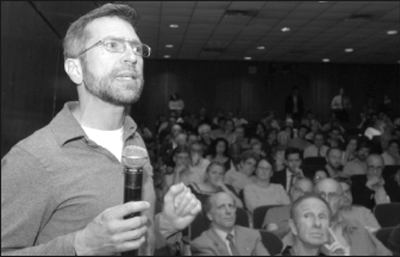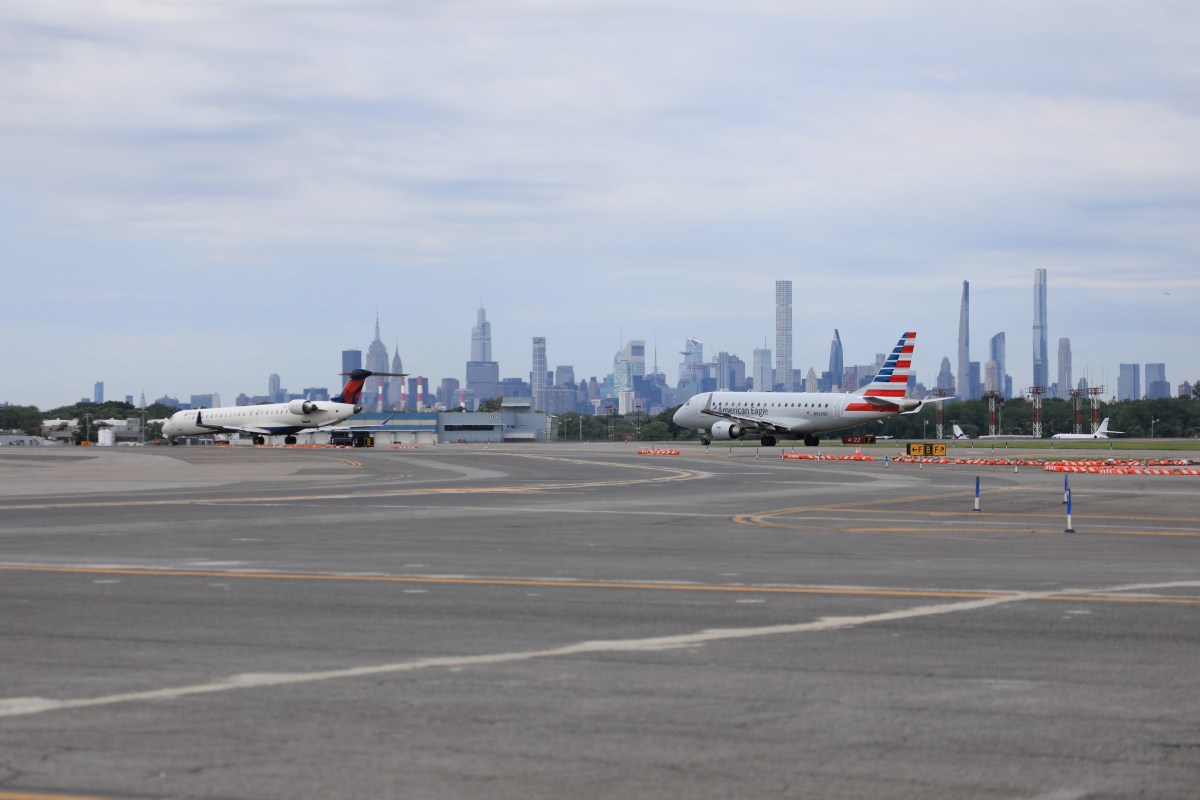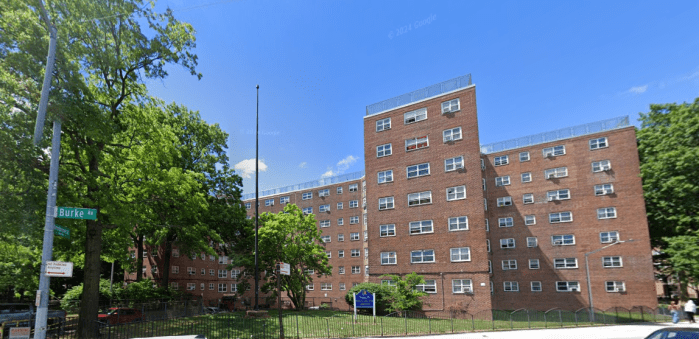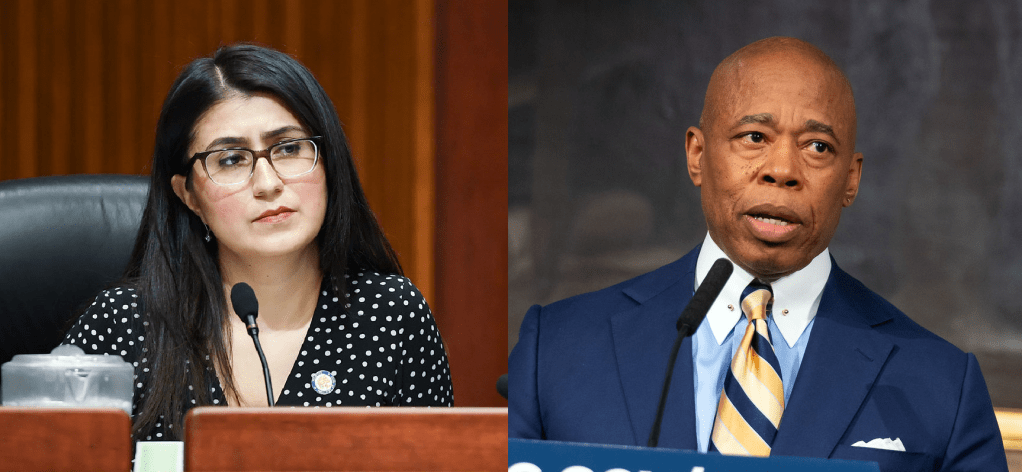By Albert Amateau
You’d think that St. Vincent’s Hospital, where six generations of Villagers have been born, cared for and died over the years, is a beloved institution in their neighborhood.
But the surprising truth that emerged at a June 13 forum convened by the Greenwich Village Block Associations is that most close neighbors would rather see St. Vincent’s move out of the Village than have the institution’s proposed new high-rise hospital and high-end residential development as neighbors.
The two-hour forum at St. Vincent’s Cronin Auditorium attracted more than 200 people; so many of them signed up to speak that Marilyn Dorato, president of G.V.B.A., a coalition of local block associations, had to limit comments to two minutes. All but a few were opposed to the project that St. Vincent’s is proposing in partnership with Rudin Development for the location on Seventh Ave. S. between W. 13th and W. 11th Sts.
“About 80 percent of the people came from 11th, 12th and 13th Sts.,” said Dorato after the event. “But what surprised me was that some of the most scathing comments came from people on Eighth St. and on Bank St.,” she added.
“This is the beginning of a very long complicated process,” said Bernadette Kingham, St. Vincent’s senior vice president, who made the June 13 presentation along with other hospital officials and John Gilbert, Rudin vice president and chief of operations.
The heart of the process will be a rezoning application to increase the allowable floor-to-area ratio (F.A.R.) for this section of Seventh Ave. S. to accommodate the new hospital and the residential part of the project. Sheldon Friedman, the project’s land-use attorney, told the forum that the current F.A.R. of the St. Vincent’s neighborhood is much lower than any other hospital area in Manhattan.
“Lenox Hill [E. 77th St. and Lexington Ave.] has an F.A.R. three times higher than St. Vincent’s Village area,” Friedman said.
Nevertheless, neither the hospital nor Rudin would say what F.A.R. they would seek. F.A.R. determines the height and bulk of a project and refers to the amount of floor space that may be built in relation to the footprint of a property.
Although St. Vincent’s has had meetings with a community working group for the past few months, no specific development plan has yet emerged. The current hospital includes a maze of eight connected buildings between 11th and 12th Sts. on the east side of Seventh Ave. S., including the Coleman tower on Seventh Ave. S. at 11th St., completed in 1970.
On the west side of Seventh Ave. between 12th and 13th Sts. is the three-story O’Toole building, the former National Maritime Union hall, now used as St. Vincent’s community health facility. A triangular property between 12th St. and Greenwich Ave. on the west side of Seventh Ave. is where the hospital stores oxygen tanks.
St. Vincent’s, with Rudin as a development partner, intends to demolish the O’Toole Building and erect a state-of-the-art hospital that could rise 20 stories or higher. On the east side of Seventh Ave. S., Rudin would have the option of demolishing all or part of what is there and constructing market-rate apartments, which would pay for the new hospital. Rudin would also have the option of adapting existing buildings on the east side of the avenue for residential use.
The project would be staged to allow St. Vincent’s to provide full hospital service throughout the construction period.
In the wake of the Berger Commission report on hospitals in New York State, Cabrini Medical Center on E. 19th St. and St. Vincent’s Midtown — formerly St. Clare’s — on W. 51st St. between Ninth and 10th Aves. will close, leaving St. Vincent’s in the Village as the only West Side hospital between Lower Manhattan and W. 59th St., Kingham said.
But critics, like Philip Schaffer, of 144 W. 11th St., insisted that the project is driven by real estate concerns, rather that medical ones.
“This is not a philanthropic operation,” Schaffer said. Questioning the need for a major hospital in the low-rise residential Village neighborhood, he suggested that St. Vincent’s move to the Hudson Yards in the West 30s, “where the stadium was supposed to be.”
Kingham replied that such a move would not be economically feasible. She noted that the new St. Vincent’s would have only about 90 percent of the 723 beds currently, but the space would be flexible. Instead of moving patients from one floor to another, from operating rooms to recovery rooms and intensive-care stations, the new hospital would have single rooms that could quickly be converted to serve all those functions, she said.
Christopher Cormac, a W. Eighth St. resident whose family has lived in the Village since 1938, said, “We’re talking about building a 21st-century medical center for most of Manhattan in a residential neighborhood — in the Greenwich Village Historic District.” Despite the proximity of the Seventh Ave. S. subway, “This is not the most accessible place in the city,” he said.
Kingham replied that St. Vincent’s owns the property where it is now and added, “We’ve been here for 150 years.” The remark only provoked groans from the audience.
They applauded, however, when Mark Westcott, a Village resident and a physician at Lenox Hill Hospital, noted that the East Side hospital recently completed a multimillion dollar renovation within its existing space.
“I work in a 21st-century hospital and you can, too, if you do it in the space you have,” he told St. Vincent’s executives who were presenting the project.
The flexible 21st-century hospital that St. Vincent’s wants to build is especially appropriate in New York City in an age of terrorism, Dr. George Neuman, St. Vincent’s medical director of perioperative services, told the forum.
“Our emergency room needs to be able to deal with four times the number of patients it can treat ordinarily,” he said. Rooms have to be built that take air in, rather than let it out, when doors are open, in order to prevent respiratory syndromes like SARS to spread, he added.
But some audience members took offense at references to terrorism and bio disasters.
“Fear mongering is not the best way to present the project,” said Chris Bianchi, a second-generation Village resident who lives on W. 13th St.
Michael Markowitz, a Bank St. resident, also derided the reference to terrorism. Markowitz was also opposed to building private housing on the current main St. Vincent’s campus site on the east side of Seventh Ave. S.
“This is a huge privatization of a public space — even if it is private, it is for the public benefit,” said Markowitz regarding the hospital property on the east side of the avenue.
Marlene Nadle, a resident of W. 14th St. speaking for the Village Independent Democrats political club, called for affordable housing to be included in the project’s residential component.
“It should be 30 percent, and permanent,” she said. Gilbert, however, said the project would not bear the cost of affordable housing.
“St. Vincent’s does not belong on this site,” said Trevor Stewart, a resident of W. 13th St. “It’s disingenuous to say you don’t know yet what you’re going to build here,” he added. “You’re coming out of a bankruptcy the result of mismanagement and who is to say you will not make the same mistakes,” Stewart added.
Michael Anastasio, a W. 13th St. resident and a member of the community working group meeting regularly with St. Vincent’s, called for financial information that would shed light on the size of the residential part of the project.
“Don’t tell me that Rudin has not put together an informal financial analysis,” he said.
Gilbert, however, replied the company won’t know what can be built until the area is rezoned.
Despite neighbors’ skepticism about the need for a modern hospital in the Village, Kenneth Raske, president of the Greater New York Hospital Association, said the project was necessary for the city’s healthcare system.
“We have a crisis of hospital infrastructure in New York City,” he said. “It’s imperative to create state-of-the-art, smaller and much more efficient hospitals. You can’t put modern information and diagnostic technology and labs in old buildings; they have to be built in for safety and efficiency. St. Vincent’s is the only hospital between Downtown Hospital [on Gold St. south of Brooklyn Bridge] and Roosevelt up on 59th St.,” he said.







































